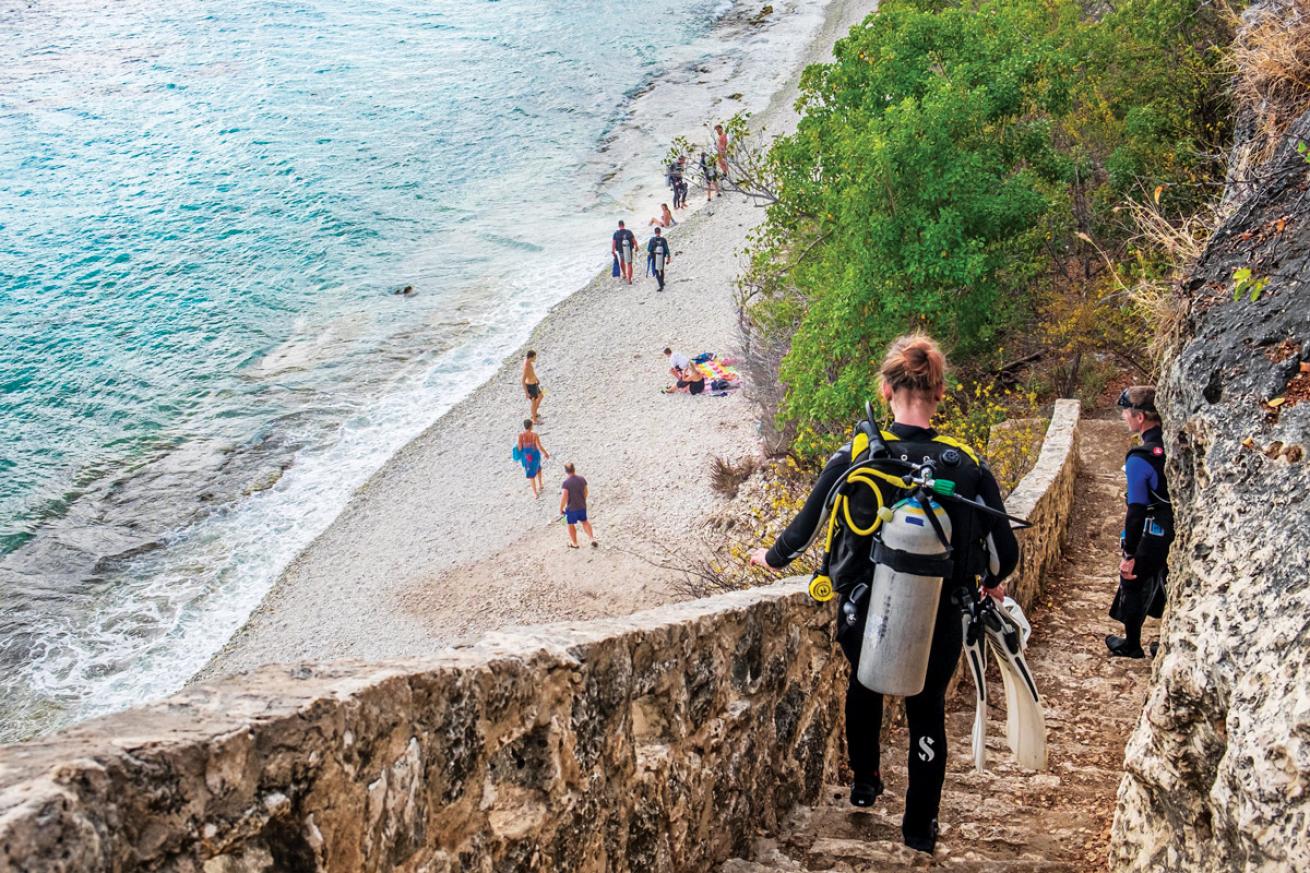Ask DAN: How do I shore dive safely?

Courtesy Divers Alert NetworkPreparing properly before your next shore dive can help reduce any risks.
No matter what type of diving you do, it’s important to know what hazards are involved. Just as boat diving involves certain risks and considerations, so does shore diving. Being mindful of these considerations will reduce your risk and make your adventure safer and more enjoyable.
Shore diving may involve wading through surf, ascending or descending stairs, jumping from a platform or entering and exiting via a ladder, dock fixture, ramp, beach or rocky shore. The physical conditions of the site are essential to consider when planning safe entries and exits, and should be integrated into your emergency action plan.
Know What You’re Getting Into
Weather and sea conditions at a dive site can change rapidly throughout the course of the day—and even during a single dive. Therefore, it's important to continually evaluate site conditions to observe any potential weather or current changes and modify your plans accordingly.
Before you arrive at the dive site, research expected site conditions and hazards. Pay attention to risk factors such as large waves, strong currents, slippery surfaces, sharp protrusions and other hazards to avoid in your entry and exit plan.
Before you enter the water, do a visual assessment to connect your research with your own observations of the site.
Discuss with your dive buddy or group how best to enter and exit the water, and establish a backup plan in case conditions rapidly or unexpectedly change during your dives.
Related Reading: How to Check Water Conditions When Planning a Dive
Curate Your Gear
Use equipment specific to shore diving. Some sites may have challenging access points that require additional equipment, so it is important to make sure all necessary gear is present and in working order before your dive.
For example, if your entry involves jumping off a dive platform, check to ensure that a ladder or rope is in place before you enter the water so you have a way to safely exit at the end of your dive.
Although you’ll be diving closer to land than is typical when boat diving, you should still carry surface signaling equipment in the event of current, heavy seas, exhaustion or other trouble.
In addition, be aware of boat traffic and local regulations regarding use of dive flags or surface buoys.
While most divers recognize the need for emergency oxygen and first-aid gear on boats, some neglect to realize their importance at shore diving sites.
When shore diving, especially without an operator, bring the necessary safety gear to be prepared in an emergency.
When planning and building a first-aid kit, consider the dive environment and location, potential hazardous situations or marine life you might encounter, and the location and remoteness of the dive site relative to emergency medical care.
First-aid gear should be accessible, clearly labeled and protected from the elements. Additionally, it is important to regularly inspect your first-aid supplies for degradation or expiration so that your kit is ready to use if you need it.
A standard of care for divers in diving-related injuries is the prompt administration of oxygen by a trained person. Whether diving from a boat or from shore, it is recommended that an oxygen kit be reasonably accessible.
A good rule of thumb to use when selecting an oxygen kit for shore diving is that it should hold enough oxygen to support two divers for the time it would take until emergency medical services can reach the site to provide additional care.
Planning and Preparedness
It is recommended to include procedures for helping injured divers back to shore, treating hazardous marine life injuries and steps to take if someone gets decompression illness in your shore diving emergency action plan.
To specifically treat cardiac events such as heart attacks, shore divers may also consider diving at locations with an automated external defibrillator (AED) available on shore near the site. While this may sound impractical, it’s worth considering that nearly one-third of diving fatalities involve cardiovascular emergencies.
The best emergency action plans contain procedures for various site-specific situations and safety concerns that may arise at your dive site, so be sure to research your site and customize your plans to stay safe and prepared for anything your shore diving adventure may bring.










